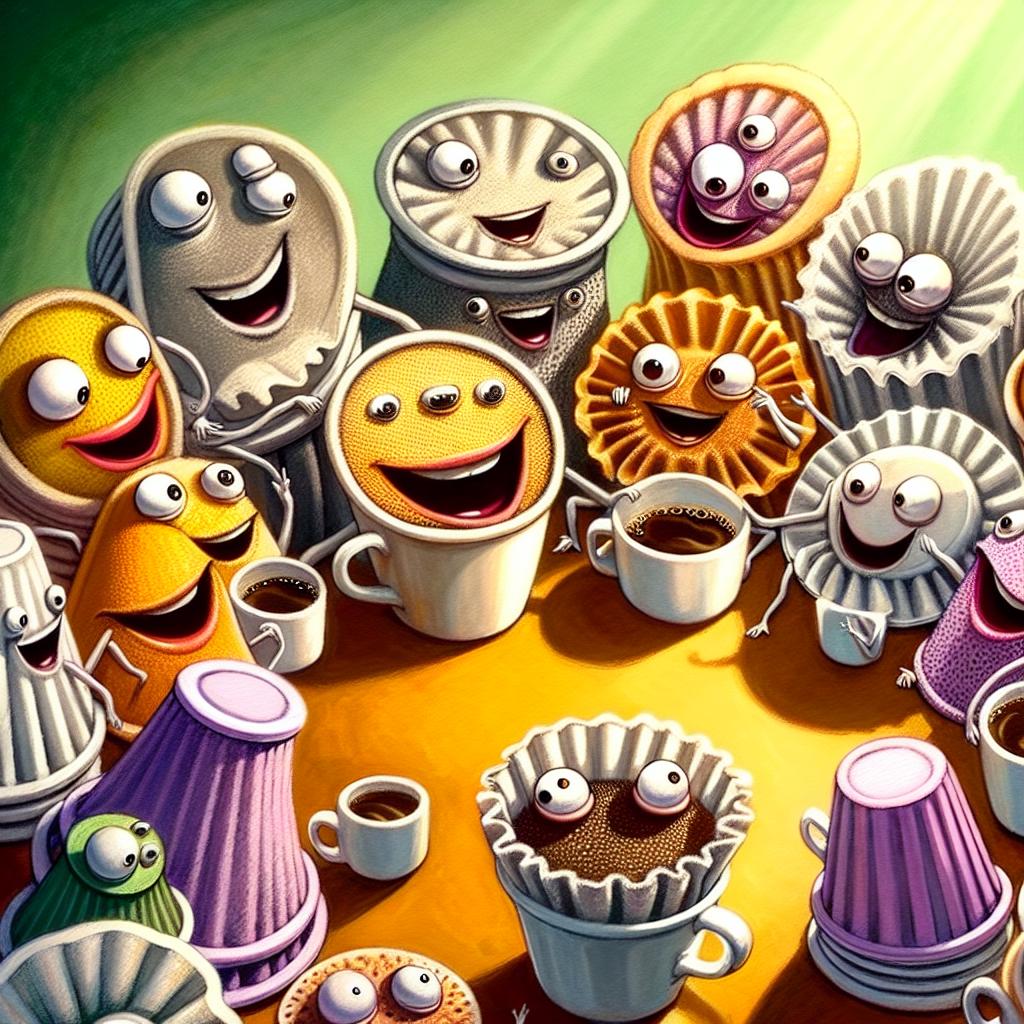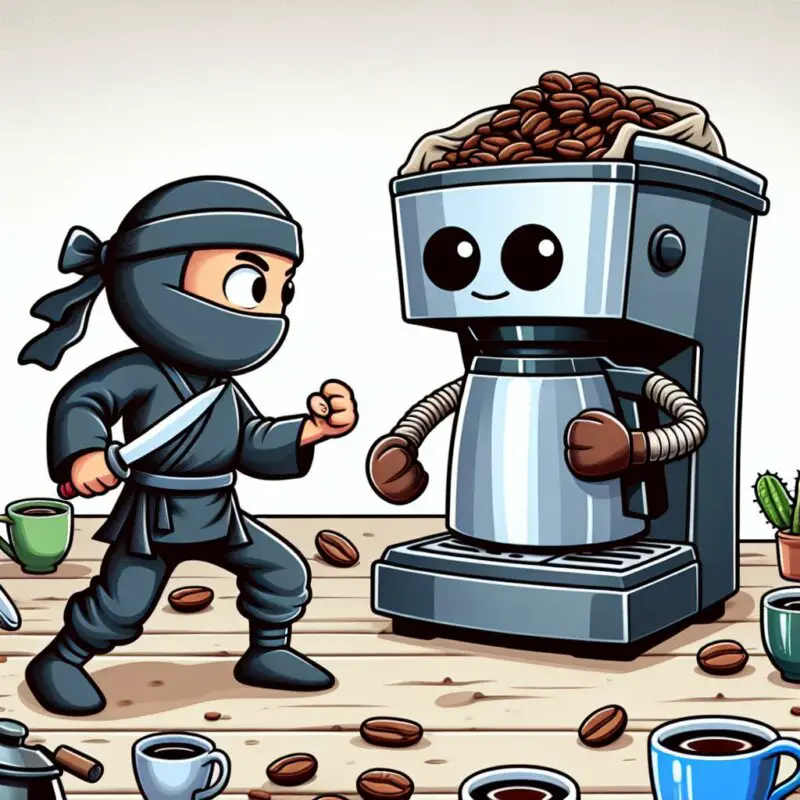This post may contain affiliate links. Please read my disclosure for more info.
Coffee filters might look simple – just a piece of paper that water flows through, right? But there’s more to them! They come in various shapes, sizes, and even materials. Yes, some aren’t paper at all!
In this guide, we’ll dive into the world of coffee filters. Wondering which size to buy? Confused between #2 and #4 filters? Debating between metal and paper? Or curious about bleached versus unbleached? We’ve got you covered!
Sit back with your coffee and get cozy. Let’s dive into the real scoop on coffee filters.
Coffee filter shapes
Basket filters
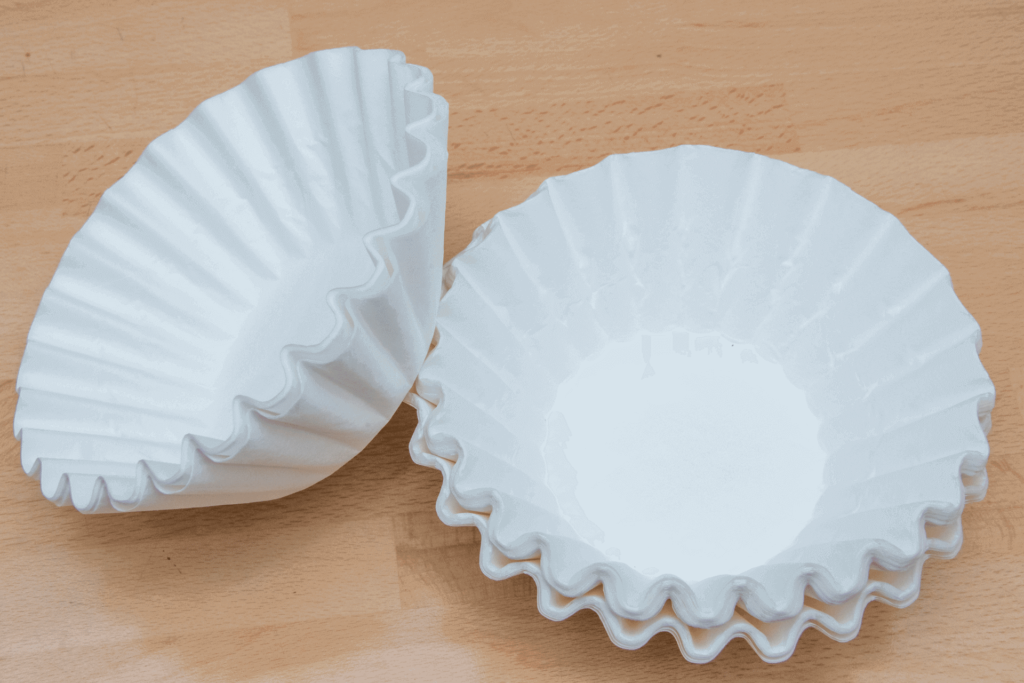
Meet the coffee filters you likely know and love! Picture a bucket: flat bottom, sides that lean out, making the top wider than the bottom. They’re like that, with sides that are either smooth or have folds, just like a cupcake liner. Perfect for your morning brew!
They’re also called cupcake or flat-bottom filters because of their shape.
Conical filters
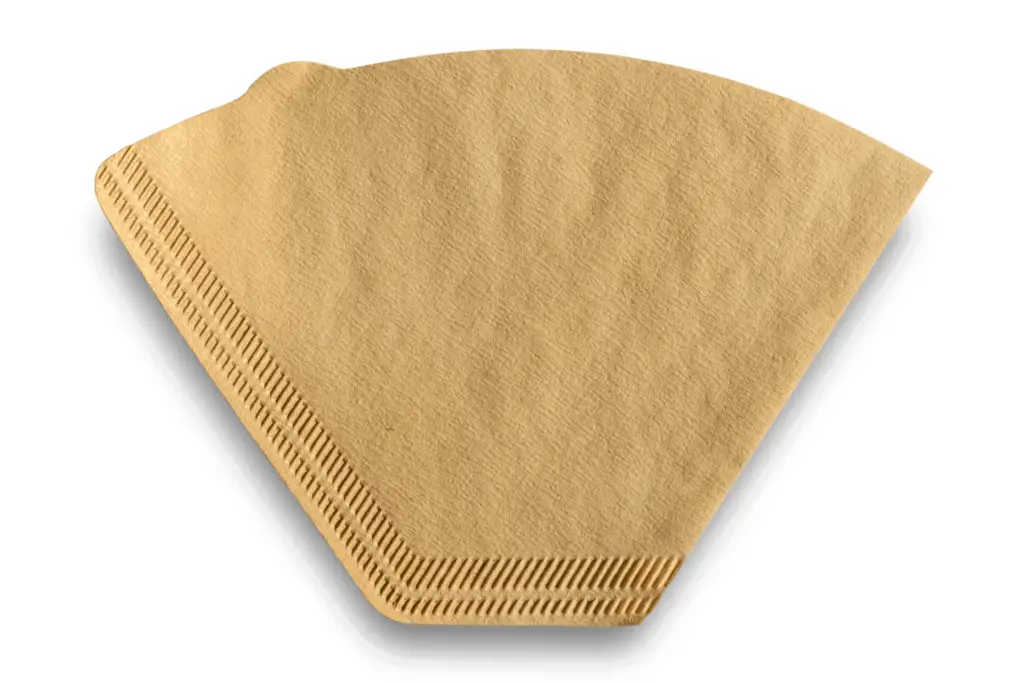
Conical filters are like the cool shapes you see at a party! Imagine one that looks just like a party hat or a yummy waffle ice cream cone, where all the sides come together at a single point at the bottom. Then, there’s another kind that’s almost the same, with a round top and sides that get closer together, but instead of meeting at a point, they join in a thin line at the bottom. Both are super interesting ways to filter your coffee!
Disc filters
Disc filters are small, flat, and round, perfect for the AeroPress and even some percolators or French Presses. They’re a great choice if you’re exploring different brewing methods beyond the usual conical and basket filters.
Basket Coffee Filter Sizes
Basket-shape filters typically come in two sizes: basket and junior basket.
Basket
These flat-bottom filters, fitting 8-12 cups, are likely what you use in your drip coffee maker. If there’s no size on a basket filter, it’s probably the standard size most people use.
Junior basket
Junior basket filters, smaller siblings of basket filters, fit enough grounds for 4-6 cups of delicious coffee.
Conical Coffee Filter Sizes
Cone filter sizes use numbers: smaller numbers mean smaller filters.
#1 size filter
This filter fits single-cup brewers, both plug-in and manual ones. It stands around 2 1/4 inches high.
#2 size filter
These filters fit small electric (2-6 cups) and non-electric (1-2 cups) coffee makers, standing at 3 1/4 inches tall. Perfect for your morning brew!
#4 size filter
Use a #4 filter for electric makers (8-12 cups) and non-electric ones (8-10 cups).
#6 size filter
Discover the biggest cone coffee filter size, perfect for brewing over 10 cups in electric machines or drip cones. It stands tall at 5 1/4 inches.
Coffee Filter Thickness
When we talk about coffee filters, we often overlook how thick they are. Yet, thickness really matters for a great cup of coffee. Remember this easy tip: the thicker, the better.
Thin filters rush the water, not giving coffee enough time to brew well. Though thicker filters cost a bit more, they greatly improve your coffee’s taste, making them worth the extra pennies.
Bleached vs Unbleached Coffee Filters
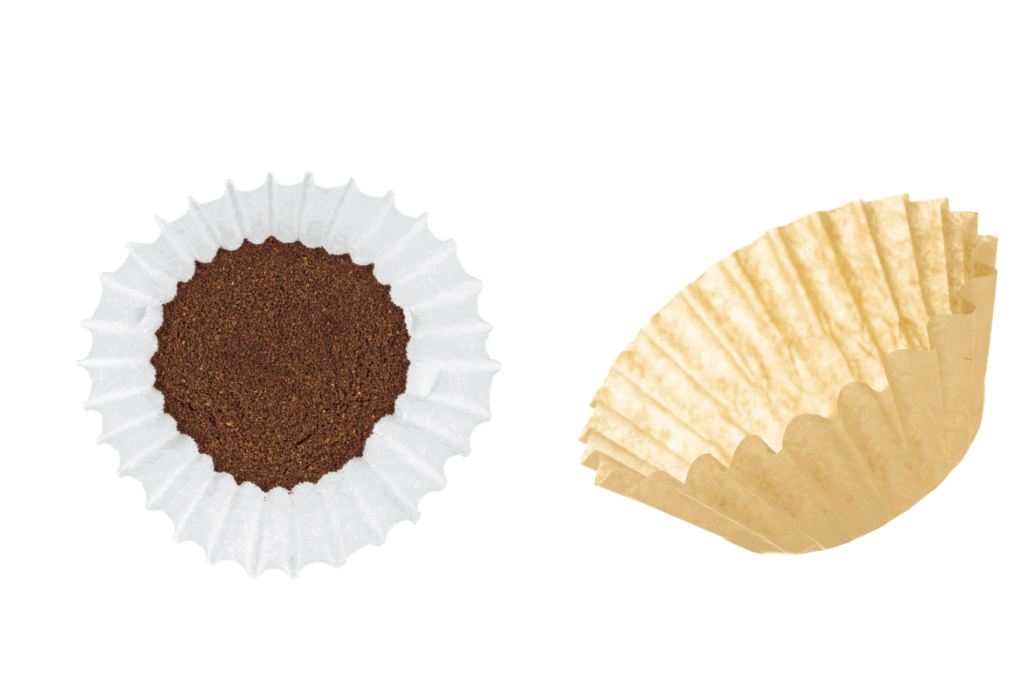
Bleached coffee filters
Did you know paper isn’t white to start with? It’s actually a light brown, like the paper towels in restrooms and office kitchens. To get it white, it goes through a bleaching process. Some methods use strong, inexpensive chemicals, while others opt for gentler, pricier ones.
When it comes to making your coffee, filters matter. They’re often bleached with chlorine or oxygen. Chlorine isn’t just bad for the planet; it also makes for poorer quality filters. While no bleaching is great for the environment, using oxygen is a much better choice.
Many coffee lovers prefer bleached coffee filters because they look clean and don’t change the taste of your coffee, even if you don’t rinse them first. The bleaching chemicals won’t mix into your coffee, so these filters won’t affect your coffee’s flavor or harm your health.
Unbleached coffee filters
Unbleached filters keep their natural brown color. They’re made without harsh chemicals, making them a greener choice compared to bleached coffee filters.
Unbleached coffee filters might add a tiny, paper-like flavor to your brew if not used correctly. But don’t worry! A quick fix is to simply pre-wet the filter before use. This way, you’ll enjoy your coffee without any drawbacks from using unbleached filters.
Comparing bleached and unbleached filters
Choosing between bleached and unbleached coffee filters comes down to this tradeoff.
- Environmental impact — Unbleached filters are more environmentally friendly.
- Ease of use — Unbleached filters need to be rinsed before use, whereas bleached filters can be used as-is.
- Cost — Unbleached filters are slightly more expensive on average, even though they are less processed.
Unbleached coffee filters are a bit more expensive and less convenient, but they’re better for the planet. It’s your call to balance the cost, ease, and environmental impact when choosing. I suggest going for unbleached to help the Earth.
Paper vs metal coffee filters
Tired of throwing away paper filters? Consider switching to metal coffee filters. They offer benefits in three key areas: the taste of your coffee, how easy they are to use, and their cost over time.
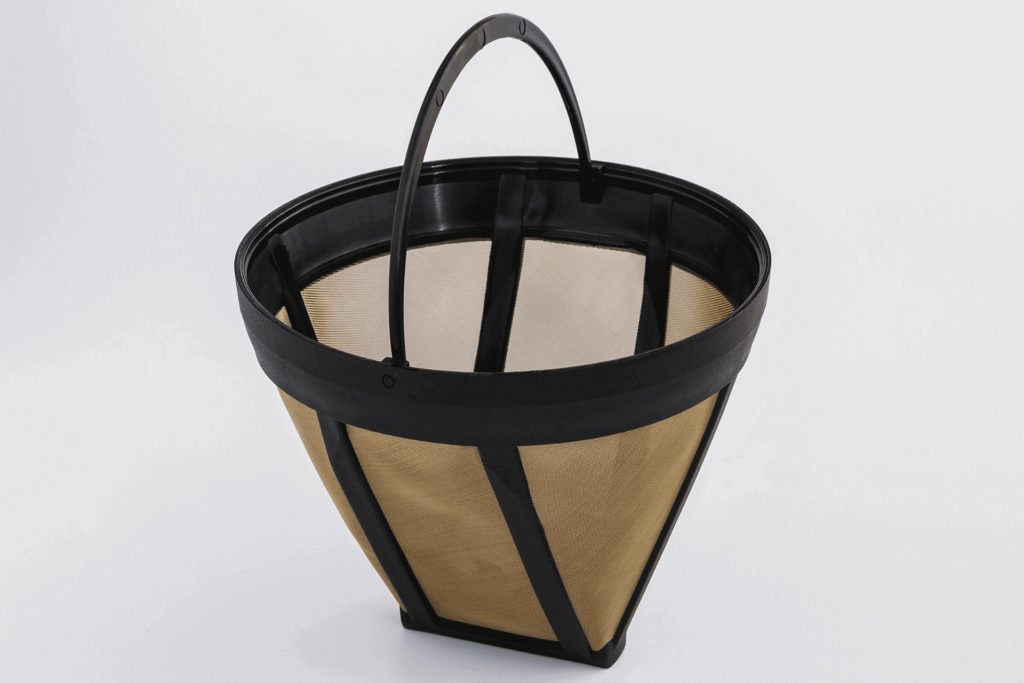
Coffee quality
Paper coffee filters use tiny holes to trap small bits and oils, keeping them out of your cup. Ever tried French press coffee? It’s full of these extras, which really change the taste and feel of your drink.
Coffee brewed with a metal filter is full-flavored, bold, and might have some sediment at the bottom of your cup. In contrast, using a paper filter gives you a clearer, often sweeter, and fruitier coffee that’s lighter and more see-through.
Using a paper filter for your coffee is a healthier choice compared to a permanent metal filter. Why? Metal filters let oils slip through that can boost your cholesterol, especially LDL – the harmful type that ups your risk of heart disease.
Ease-of-use
Paper filters make life simple! No cleaning needed – just use once and toss them out. Perfect for quick coffee fixes without the fuss.
Using metal filters means you’ll need to toss the used coffee grounds into the trash and then give the filter a good rinse in the sink. Be careful not to let grounds slip down the drain, though. They can build up and clog your sink over time.
Price
Paper filters are super affordable! You can find some for as low as $0.01 each, and even the priciest ones don’t go beyond $0.10. If you brew your coffee daily, you’ll only spend between $3.60 and $36 in a year. How cool is that?
Metal filters for coffee come in all price ranges, from a budget-friendly $5 to a premium $60. Typically, you might pay about $10 for one. With the right care, this one-time purchase can last you for years.
If you love your daily coffee, switching to a metal filter can save you money in the long run. While using cheap paper filters might seem budget-friendly, a metal filter becomes a smarter choice after just a year for regular coffee drinkers. Plus, a quality metal filter can last for years, making it a great investment for your coffee routine.
Other Types of Coffee Filters
Some brewing methods stand out by using special coffee filters, not the usual ones. The AeroPress, Chemex, and Hario V60 each have their own unique filters that make them special.
AeroPress filters
Let’s talk about AeroPress filters, a popular choice among coffee lovers! These disc-shaped filters are not only widely used but also eco-friendly, as they’re made from compostable paper. Plus, there’s an option for durable metal replacements.
Chemex filters
Chemex filters are super thick, catching more tiny bits than usual paper filters. They’re great at taking out oils too, giving you a cleaner, lighter coffee. Plus, their cone shape is perfect for Chemex pour-over makers, ensuring every sip is just right.
Hario V60 filters
The V60 features a unique cone-shaped filter and a big hole at the bottom. Its filters are natural brown because they’re unbleached, keeping things eco-friendly. While any cone filter works, using V60’s own filters will give you the best coffee flavor. Perfect for those diving into the world of pour-over coffee!
Frequently Asked Questions
Can you reuse coffee filters?
Paper coffee filters can be reused once or twice if they are rinsed thoroughly and used soon after. Don’t use a paper filter that has been left for too long, as mold and bacteria quickly become a concern. Also, don’t reuse paper filters more than once or twice as they will clog over time. If you want a truly reusable coffee filter, get a metal one.
What size is a standard coffee filter?
For most drip coffee machines that use basket-shaped filters, the standard size (also known as basket size) holds enough grounds for 8-12 cups of coffee.
Are coffee filters compostable?
Most paper filters are compostable, but be sure to check the packaging for specific directions. Unbleached filters are safer to compost because they don’t have any bleaching agents, and oxygen-bleached filters will be safer for composting than chlorine-bleached filters.
Coffee filters 2 vs 4: what’s the difference?
These are the #2 and #4 size cone-shaped filters. The #2 is smaller, with the capacity to brew 2-6 cups in an automatic coffee maker or 1-2 cups in a manual coffee maker. The #4 filter is larger, with an 8-12 cup capacity for automatic coffee makers and 8-10 cups for manual coffee makers.
The Filter Things in Life
Choosing the right coffee filter size and type can be tricky, but don’t worry, this guide is here to help! Most coffee machines will tell you exactly what filter you need. If not, reaching out to the manufacturer will get you the answers. Happy brewing!
Want to improve your coffee-making skills? Check out our tips on how to brew smoother, less bitter coffee. If you’re on a budget, we’ve also curated a list of the top coffee makers under $100. Ready to take your coffee to the next level? Consider getting an automatic pour-over coffee maker. Trust us, it’ll transform your mornings!
